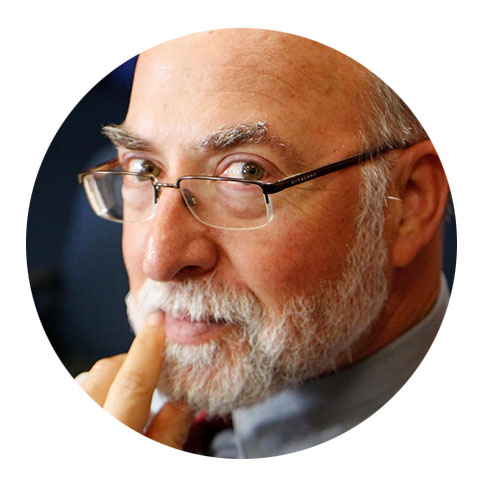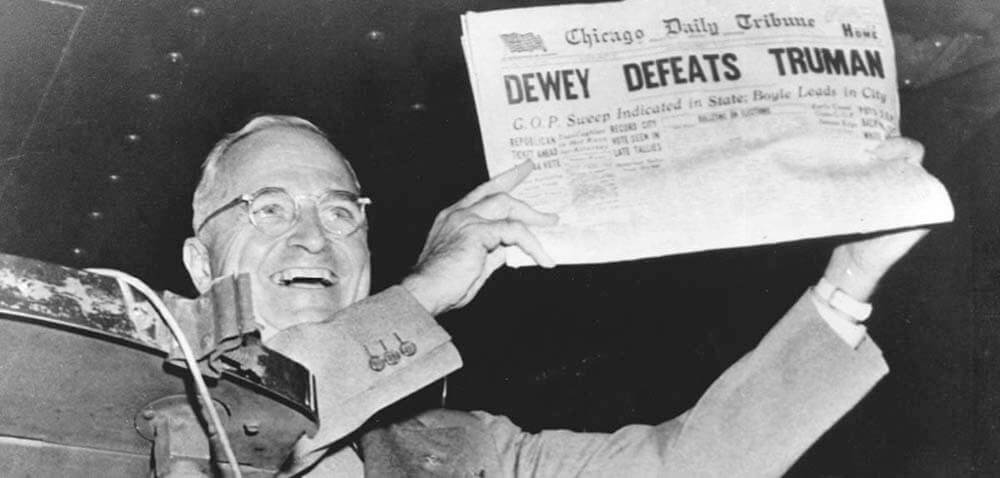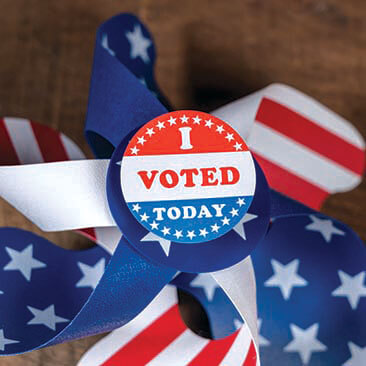No ‘Third Way’ for this Presidential Election
Why this year’s presidential election, especially, is not the one for voters to play around with third-party candidates.
Once again, we are hearing the siren song of third parties.
As the November election draws closer, progressives unhappy with Joe Biden and conservatives disappointed in Donald Trump may feel tempted to cast about for alternatives. For some voters—a growing number of Californians, nearly 31%—it’s a lure they find difficult to resist. We are a deep blue state, where Democratic registration enjoys more than a 21-point advantage over Republicans. The “Party of the Voting Dead” is so unpopular that more registered voters prefer no political party at all to any association with Republicans.
It would be easy for Progressives to rationalize such a protest vote in California as “not really hurting anything” since Biden is sure to win anyway. Which of course begs the question, “Then what’s the point of doing it at all?”
Unlucky Conservatives, however, have no alternative they could plausibly claim that keeps the faith with conservative principles.
Libertarian philosophy, with its hands-off orientation toward regulating personal behavior and opposition to any government intervention in the “free market,” is completely at odds with both the culture-war Puritanism that republicans profess, and their grotesque corporate welfare programs and economic bullying of ideologically disfavored companies like Amazon, Facebook, and other media entities.
The other “conservative” third party, the American Independent Party, with its “God, guts and guns” philosophy, has always stood for xenophobia, racism, fringe conspiracy theories, and reckless militarism. Hardly a standard bearer for the values that traditional, moderate Republicans purportedly yearn to reclaim.
THE FUTILITY OF THIRD-PARTY CAMPAIGNS
Let’s review the roster of major 20th and early 21st century third party campaigns: Teddy Roosevelt (Progressive “Bull Moose” Party, 1912); Henry Wallace (Progressive Party, 1948); George Wallace (American Independent Party, 1968); Dr. Benjamin Spock (People’s Party, 1972); and assorted Libertarian Party candidates: John Anderson (independent candidate, 1980), Barry Commoner (Citizens Party, 1980), Ross Perot (independent, 1992, and Reform Party, 1996), Ralph Nader (Green Party, 2000), Jill Stein (Green Party, 2016).
Why do voters keep throwing away their ballots like this? For all the positive political impact it’s had, they might as well be flushing them down the toilet, except that it would clog the pipes.
We cannot point to a single third-party candidacy that has ever had a beneficial effect of either moving one of the major parties in its direction or re-orienting the electorate at large to its direction. In virtually every case, all the third-party run has accomplished is to siphon votes away from the major party it most closely resembles.
In 1912, for example, Teddy Roosevelt, formerly a two-term Republican president 1901-1909, mounted another presidential run (before the later imposition of presidential term limits) but was narrowly defeated for the Republican nomination by his one-time protégé, incumbent William Howard Taft. Teddy then quit the Republicans and established the new Progressive Party, reflecting his own increasingly leftward progressive political evolution.
Roosevelt’s third-party bid ultimately received 27.4% of the vote to Taft’s 23.2%, but both were defeated by Democrat Woodrow Wilson, who carried 40 states with 41.8% of the popular vote and racked up 435 Electoral College (EC) votes to Teddy’s 88. Taft was crushed, carrying only two states and winning only eight EC votes. Socialist Eugene Debs’s bid was not a factor at all.
Wilson’s two terms were no high-water mark of liberal or progressive policies, marred by the return of the KKK and lynchings, thanks to the 1915 film Birth of a Nation (whose director, D. W. Griffith, was invited by Wilson to the White House for a special screening); America’s involvement in World War I (320,000 sick or wounded, 116,00 dead in combat or from disease); the 1918-20 Spanish Flu pandemic, estimated to have killed between 500,000 and 850,000 Americans, and as many as 50 million worldwide, with a mortality rate of 10% among those infected.
Finally, of course, Prohibition, which touched off a horrendous decade of bootlegging, police corruption, and gangland crime before its eventual repeal. In 1920, Republican Warren Harding was elected, notoriously incompetent and corrupt, followed by Republicans Calvin Coolidge and Herbert Hoover, the stock market crash, and the Great Depression.
In other words, Teddy’s 1912 Progressive Party campaign was followed by two decades of increasingly retrograde, inequitable, and destructive anti-progressive policies. You might argue things would have been even worse had Taft been re-elected 1912, but it was clear that his progressive challenge and eight years in the wilderness had done nothing to temper reactionary Republican policies when they returned to power from 1921-1933.
THIRD-PARTY MATH
In 1948 former FDR vice-president Henry Wallace hoisted the Progressive Party banner for the third time, challenging the incumbent Democratic president, Harry S Truman (who had succeeded Wallace as FDR’s VP in 1945, and become president when FDR died in office in April 1945).
While Wallace was hitting Truman from the left, South Carolina Gov. Strom Thurmond’s Dixiecrat Party was hitting Truman and the Democrats from the right over their support for civil rights. Heading into Election Day, it was looking dire for Truman—There are those who remember the famous Chicago Tribune early edition headline, “Dewey Defeats Truman”—but Truman ultimately went on to defeat Republican Thomas Dewey 49.6%-45.1%, but if the Progressives and Dixiecrats hadn’t siphoned off nearly 5%, Truman would have won not in a squeaker, but in a rout.
George Wallace’s third-party American Independent Party bid in 1968 was a different matter. Though he had previously won and held office as a Democrat, Wallace ran an overtly racist and right-wing law-and-order campaign and carried five states in the Deep South with 13.5% of the vote and 46 Electoral College votes. However, given Hubert Humphrey’s relative liberalism and long-standing support for civil rights, it’s unclear how much support Wallace siphoned off from Humphrey, as opposed to Republican Richard Nixon, who was also running a law-and-order campaign.
While Nixon narrowly won the popular vote with 43.4% to Humphrey’s 42.7%, he took the Electoral College handily with 301 votes to Humphrey’s 191. Even by adding all of Wallace’s 46 EC votes to Humphrey’s total wouldn’t have put him within striking distance of Nixon. Subtracting Wallace’s candidacy would have made no difference in the eventual outcome of that election—but he ultimately exerted a powerful effect on the trajectory of Republican candidacies to come.
THE FUTILE PROTEST VOTE
The 1980 campaign was unusual in many ways and posed a serious dilemma for members of both major parties. Democratic incumbent Jimmy Carter was widely viewed as a failure undeserving of a second term—we had the Iranian revolution, the hostage crisis, the Soviet invasion of Afghanistan, the cancellation of American participation in the 1980 Olympics, an oil-supply crisis and recession, raging inflation, and the outbreak of the Iran-Iraq war.
There was no way Carter would get re-elected or deserved to be. But what were the alternatives? Carter managed to fend off a stiff challenge from Sen. Ted Kennedy (inspiring one of the great concession speeches of all time), so there was no chance of running a new Democratic nominee. Ronald Reagan had easily defeated his only serious rival for the Republican nomination, George H.W. Bush, and other minor Republican opponents.
Personally, I never had a harder time figuring out what to do.
Assuming there was no chance Kennedy or any other Democrat would successfully challenge Carter’s re-nomination—and equally certain that Carter would go down to defeat in November no matter who the Republican nominee was—my strategy was to try and nominate the least objectionable Republican, so I re-registered as a Republican to vote for George Bush over Reagan in the primary. Of course, my strategy failed and not only did Reagan prevail, after he picked Bush for VP, Bush repudiated all his previous criticism of Reagan and became his biggest cheerleader. So much for “moderation.” So that fall, I cast the only third-party vote of my life purely as protest, for the independent candidacy of moderate Republican John Anderson.
That, too, was a futile gesture. As I had anticipated, Reagan won in a historic landslide, garnering 50.7% of the popular vote, winning 44 states and 489 Electoral College votes to Carter’s 49. Anderson won no states and no EC votes; adding his entire popular vote to Carter’s would have made no difference in the outcome.
The Citizens Party Barry Commoner, running from the left on an environmental platform, received only 0.27%, far less than irrelevant, and my hopes for moderating the country’s swing to the far right were dashed as we plunged into 12 years of Reagan Republicanism—in policy terms, a more genial, competent and dignified but equally irresponsible precursor to today’s Trumpist extremism.
THE SCRAMBLERS
In 1992, after that nightmare, another populist demagogue emerged to further scramble the political picture: Texas billionaire Ross Perot. Despite an autocratic personality somewhere between eccentric and nuts, Perot nonetheless put together a competent enough organization to qualify his independent candidacy for the ballot in all 50 states, with a platform that held some appeal for both liberals and conservatives. Bill Clinton cinched the Democratic nomination with a disciplined and effective campaign, and incumbent George Bush turned back his own internal right-wing populist challenge from Pat Buchanan, but Perot nevertheless garnered a surprisingly high and consistent level of support for a third-party bid. After a weird, increasingly paranoid stop-start campaign, by election day Perot still garnered 19% of the popular vote.
Because much of Perot’s program focused on fiscal conservatism, economic nationalism, nativism, populist anti-elitism and conspiracy theories, and his support was overwhelmingly White, it’s natural to assume that he drew more Republican than Democratic votes, but it’s a myth that he siphoned off Bush’s support and threw the election to Clinton. The data are quite clear that Perot drew support equally from both parties; moreover, that 24% of Perot voters would otherwise have stayed home. Analysts have also pointed out that Perot’s support was strongest in states that strongly favored either Bush or Clinton, so his voters could not have been a factor in swinging even a single state.
Net result: despite his popular vote, his $69 million campaign failed to win a single state or Electoral College vote, and his subsequent 1996 presidential bid, under his new “Reform Party” banner, retained only 40% of his original voters and captured less than half his 1992 popular tally. By 2000, the Reform Party was so irrelevant even Donald Trump, who’d flirted with their nomination, had walked away: nominee Pat Buchanan eked out only 0.43% of the November vote, and the party has all but ceased operation.
THE SPOILERS
As most of us know, it was a different story entirely for Ralph Nader’s Green Party candidacy in 2000, where the contest between Republican George W. Bush and Democrat Al Gore was so close nationally that the entire outcome literally hinged on either New Hampshire or Florida.
After much confusion and legal wrangling over the extent of a Florida recount and the appropriate standards to apply, the U.S. Supreme Court on December 12, in a case brought by the Bush campaign, overrode the Florida Supreme Court and effectively halted the state recount.
The final tally gave Bush the edge over Gore by a mere 537 votes out of nearly six million ballots cast; Nader had garnered 97,488, so if even 1% of the Nader voter had gone to Gore, he would have won Florida. In New Hampshire, Gore lost by roughly 7200 votes—a margin far less than Nader’s 22,198 votes.
Despite winning the overall popular vote by more than half a million, Gore lost to Bush in the Electoral College by only two votes, an outcome that would have been reversed had Gore won either state. While Nader’s impact is still a matter of some dispute, his reputation never fully recovered among liberals and progressives who blame him for throwing the election to Bush and paving the way for disastrous environmental policies and a military catastrophe in the Middle East.
In 2016, the Green Party once again, and its candidate Jill Stein, may have been the spoiler that tipped the election from Hillary Clinton to Donald Trump. Despite winning the national popular vote by more than three million, Clinton lost in Michigan, Wisconsin, and Pennsylvania by a total of some 79,000 votes. In Michigan, Trump beat Clinton by about 11,000 votes, while the Green Party took more than 51,000 votes; in Wisconsin, Trump’s margin was about 44,000 votes while the Green Party took 49,000; and in Wisconsin, Trump won by 23,000 votes while the Green Party claimed 31,000 votes.
Now, many other factors were at play—a stiff primary challenge from de facto third-party internal candidate Bernie Sanders, a registered Independent both before and after the presidential election; Russian interference; nonstop media hammering over the nonsensical email server issue, and the impact of the Comey investigation letters; Republican vote suppression efforts. The fact remains that the third party closest in philosophy to the losing candidate and her party siphoned off far more than enough votes to have reversed the outcome.
In conclusion, then, I would argue that third parties historically have never successfully elected national candidates on their own, have never successfully influenced a major party in their direction, and have at best only bled off support from the candidates and parties most allied with them, either narrowing their victory or quite possibly sinking them altogether.
Voting is not therapy, and the goal should not be to “send a message” or make you “feel good.” Casting an irrelevant ballot only ensures that politicians will regard your constituency as irrelevant, since your tiny, marginal vote falls outside the parameters of meaningful participation or influence.
The only goal that matters is electing the best candidate among the choices who can win. In our system, for better or worse, it is impossible for third parties to win, unless they manage to supersede one of the major parties. That has rarely happened historically, but could conceivably happen again, as the Republicans in my opinion richly deserve.
It goes without saying, but I will say it anyway, that the paramount objective this November is defeating Donald Trump and roundly repudiating Trumpism and all its enablers that requires not just racking up state victories and prevailing in the Electoral College, but racking up such an overwhelming popular vote margin that there can be no ambiguity about the outcome, or about the popular mandate for a dramatic change in direction. And for that, there is not a single vote to waste.
Especially a third-party vote.
‚ÄúDewey Defeats Truman‚Äù was an incorrect banner headline on the front page of the¬ÝChicago Daily Tribune¬Ý(later¬ÝChicago Tribune) on November 3, 1948, the day after incumbent¬ÝUnited States¬ÝPresident,¬ÝHarry S. Truman, won an¬Ýupset victory¬Ýover¬ÝRepublican¬Ýchallenger and¬ÝGovernor¬Ýof¬ÝNew York,¬ÝThomas E. Dewey, in the¬Ý1948 presidential election. I










